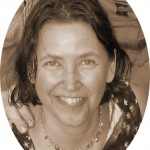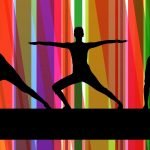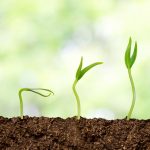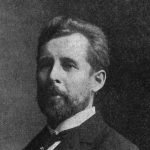Sussanna Czeranko, ND, BBE
Taking into consideration that physical life and health are based on the vibrative process in the cell, which we call change of matter, there is no doubt that all disease is simply a disturbance of harmonious vibration within the cell.
Ludwig Staden, Naturarzt, 1901, p. 110
We take it for granted that everything that exists has, or is, a form of vibration.
Louis Long, 1921, p. 541
Bacteria is not the cause of disease but the immediate result of a disordered vibration turned diseased and in other words, a lower rate of vibration of an individual, as each has his own particular vibration.
T. M. Schippell, 1936, p. 366
For the early NDs, understanding how the body worked involved a system of knowledge combining science and prevailing notions of nature. They believed that the human body was much more than its physical components. The early NDs enthusiastically embraced the spiritual side of nature just as the biomedicine profession was moving headlong toward a mechanistic understanding of human life. In one of the earliest accounts outlining what naturopathy was, Ludwig Staden states that “being but one disturbance or disease, there can be but one original cause; this is divided into a psychical and a physical one; the first is the impure thought; the second the disturbed vibrative process in the cell” (1902, p. 16). The concept of vibration had etheric and spiritual qualities that were completely alien to the reductionistic, rationalistic, and materialistic biomedical science.
The foundation of naturopathy was built on what the early NDs considered to be the incontestable eternal laws of nature, whereas medical science and its reliance on “materialism [could] never produce eternal truth” (Staden, 1902, p. 15). As part of that early naturopathic worldview, the nature cure physician incorporated “vibration” as a bridge to unify science and the principles of naturopathy into an understandable paradigm. Articulating and defining how and why vibration influenced health resulted in many interpretations by those NDs. Yet, when we examine what the historical record of the evolution of vibration was and how it related to health and disease, we find biomedical and other scientists and authors in the health field of our own time proclaiming and embracing the validity of the early notion of energy medicine. It is as if the concepts of vibration and their application to medical practice were something new instead of having evolved from the notions of vibration held by the early NDs. These latter-day biomedicine professionals sometimes use other descriptive terms, but the foundations that they denounced for decades and which they are rediscovering now come from a place well known to NDs.
Numerous contemporaries are seizing on this precious naturopathic tradition. Dr. Valerie Hunt, who is touted as an “energy field healing pioneer” and who appears to have no knowledge of those who came before her, is a case in point:
Following centuries of scientific rationalism which downplay the spiritual vision of human beings—presenting a bio-chemical view of humans as biological machines, humans as animals, humans as chemistry—recent scientific trailblazing by energy field healing pioneer Dr. Valerie Hunt may redefine the parameters of what it means to be human. Having received a $US 4 million grant to investigate the “scalar waves” used by psychic surgeons, Dr. Hunt is exploring a health model which threatens to shape a paradigm of life incorporating physics, biochemistry, molecular biology and medicine in the 21st Century. (Dawes, 2011)
Hunt is not alone in her efforts to understand vibration and energy. “Therapeutic touch” (http://en.wikipedia.org/wiki/Therapeutic_touch) was developed in the 1970s by Dolores Krieger, a nursing educator in New York. It is a form of distance healing that manipulates the patient’s energy field to reduce pain and to heal. Despite the esoteric nature of therapeutic touch, research studies and the acceptance by nursing associations continue to support this therapeutic intervention. In the 1980s, Barbara Ann Brennan explored the power of energy and vibration in her 1988 best seller, Hands of Light. Her explorations of “energy” have mushroomed, and now many people, just like the NDs of old, use their own energy for healing.
In the formative years of the profession, many early NDs when defining the essence of naturopathy pondered the nature of human life forces and healing. For example, Staden explained: “Physically and psychologically vibration is the agent of the change of matter, of thought into organized manifestation or matter” (1901, p. 110). Vibration was thought to be one of the most important mechanisms that aided the operation of the body: “The human body is an association of billions of vibrating units or cells which undergo a daily chemical and molecular change called metabolism” (Long, 1921, p. 542).
In fact, Staden was one of the first early NDs to reference vibration in the naturopathic sense. He writes that “all physical life is based upon the change of matter of the cell or upon the vibration within the cell, the problem of life and health is the problem of the harmony of this vibration for it is the essence of all manifestation” (Staden, 1901, p. 110). In the following year, Staden expanded on his ideas, and he explained in one of the earliest naturopathic journals that naturopathy was “based on the highest scientific principles” and on the following:
a. The harmony of our perceptive faculties with the physiological and psychological laws of nature; it stands on reason, conscience and experience;
b. The change of matter functioning normal or abnormal being the standard of physical health or disease; and
c. That all physical life is based upon the change of matter of the cell or upon the vibration within the cell. The vibrative process in the cell being disturbed more or less must be the physical cause of all disease and this is the problem which has to be solved in healing disease. (1902, p. 16)
Instead of placing the vibrative process in the cell, Henry Lindlahr interpreted vibration as emotions that manifested in either positive or destructive chemical processes in the body. He stated: “It has been proved over and over again by every-day experience that mental and emotional conditions positively affect the chemical composition of the tissues and secretions of the body. The destructive emotions of fear, worry, anger, jealousy, revengefulness, envy, etc., actually poison the fluids and tissues of the body” (Lindlahr, 1922, p. 401).
Lindlahr saw the harmony of emotions as supporting the life force. “What harmony is to music, hope, faith, cheerfulness, happiness, sympathy, love, and altruism,” he wrote “are to the vibratory conditions of the human entity.” He went on to describe how such emotions were “in alignment with the constructive principle in Nature” and that they “harmonized the physical vibrations” and “relaxed the tissues,” opening them “wide to the inflow of the life force” (Lindlahr, 1922, p. 400).
Using the example of how negative mental thoughts affect the body, Lindlahr gives a concrete example: “Thus, if the mind constantly thinks of, say, the stomach as being in a badly diseased condition, unable to do its work properly, the mental images of weakness and disease with their accompanying fear vibrations are telegraphed over the efferent nerves to the cells of the stomach, and these become more and more weakened and diseased through the destructive vibrations sent to them from the mind” (1922, p. 402).
A. Blackman, another early naturopathic pioneer, saw vibrations that influenced the body’s metabolism in a different light. He outlined the distinctions between two kinds of vibrations, which included thought vibrations and physical vibrations. These were further differentiated by whether they were perfect or imperfect. The perfect vibration, or “cohesive vibration,” initiated coagulation of kindred atoms. The imperfect vibration, or “disintegrating vibration,” separates and scatters these kindred atoms (Blackman, 1903, p. 77). He went on to explain that to cultivate cohesive thought vibrations for the purpose of healing “it is imperative that we concentrate upon the one thing needful” (Blackman, 1903, p. 78). In using thought and intention for healing to occur, Blackman believed that “we learn to take the elements out of the air, [and by] sending them to the different parts of the body at will, we aid Nature in her work of upbuilding, and may labor twelve, fourteen or eighteen hours a day and defy the inconvenience of weariness” (1903, p. 78).
Correct pulmonary breathing was important in gaining the benefits of health. Blackman’s formula of thought vibration is similar to positive affirmations or intentions that we are familiar with and have been popularized by Louise Hay in her book You Can Heal Your Life.
Like Hay, Lindlahr believed strongly in cultivating healthy affirmations in his patients. Lindlahr often advised his patients to procure a book on anatomy and physiology and to “study and keep constantly before their mind’s eye the normal structure and functions of a healthy [body].” In his view, affirmations of health were justified in the face of disease. “The health conditions must be first established in the mind before they can be conveyed to and impressed upon the cells,” he counseled (Lindlahr, 1922, pp. 402-403).
Considering that many early NDs thought that humans were a manifestation of vibration, it was a natural supposition that music had a powerful influence on health. One early ND expounds: “[T]hat music should influence human beings is not strange, when it is considered that that we are the result of vibrations. Each person has his vibration keyed to a different pitch and when the individual note is struck the results must follow. It remains for everyone to find what pitch he is keyed to and then apply this force to the desired end” (B. P. S., 1902, p. 496).
This notion manifests today in, for example, the use of tuning forks to elucidate a therapeutic outcome. The widespread teachings of Fabien Maman and his Tama Dō school are resonant of early naturopathic theory and practice related to music and vibration. Grounded by the laws of acupuncture and inspired by the vibrational messages of the stars, Maman has performed almost 30 years of research, corroborating that a living structure of “sound healing”indeed exists. The sound therapyresearch by Maman (2011) started with the ancient classical acupuncture texts that vaguely referenced the following five musical notes for the five elements of nature: wood (A pitch), fire (C pitch), earth (F pitch), metal (G pitch), and water (D pitch).
Just as the early NDs believed that music and sound could alter and heal, we are reminded that history manifests before our eyes. Maman (2011) writes: “Any conflict can be dissolved through sound or music, as from sound and music comes harmony. The balance of mind, body and spirit depends on whether we can create these energies of harmony or not.”
A century earlier, Morgan explained that “using sound for healing alongside living and eating with a harmonious frame of mind is certainly common sense” (1902, p. 92) He explained: “The frame of mind in which food is prepared, cooked and served is of the greatest importance and it always should be a labor of love, since every vibration that you take into your body is either a constituting or destructive force[;] almost all physical inharmony [sic] is the result of the destructive vibration which is in the food we eat and causes old age and other foreign vibrations” (Morgan, 1902, p. 92). Early and contemporary NDs consistently admonish their patients to avoid multitasking when eating. Eating on the run is inconsistent with paying attention to one’s vibration in that moment.
An understanding of the causes and conditions of harmonious vibrations that accompany health, joy, happiness, and love provided a framework for many early NDs to approach the problems of disease, pain, and death. Long suggested: “This added knowledge [of vibration] may cause some of us to be less confident that we can cure every disease and every person that comes to us by means of one method of treatment or adjustment, [but] it will lead us to put more emphasis on building up, protecting, and respecting the human form divine, and less emphasis on the curing of disease” (1921, p. 541).
By and large then, we perceive a kinship with the early NDs who courageously embraced the power of thoughts and the power of harmonious emotions in their pursuit of healing. The sagacious insights into human nature were present at the very beginnings of naturopathy and are represented in its original 12 core principles (Staden, 1902). Although healthcare providers often neglect to attribute their work to these pioneering NDs, the contemporary health landscape is enriched with books and articles that have been rekindling energy medicine. A resurgence has emerged on these themes and ideas in the works of Andrew Weil (http://en.wikipedia.org/wiki/Andrew_Weil), Louise Hay, and many others. Gowenlock proclaimed a century ago: “Vibration is life! Without it we would not be in existence!” (1912, p. 713). The elders saw the destruction that excessive stimulation had on the finely tuned human body: “As practitioners, we are apt to forget this strict law of our being. Moderation is the secret of conservation” and long life (Long, 1921, p. 543). We can wisely heed the elders’ counsel: “We all have much to learn from Nature in order to transform our life-energy into a greater amount of useful and harmonious vibrations” (Long, 1921, p. 543).

Sussanna Czeranko, ND, BBE, is a licensed ND and a Buteyko Breathing Educator. She is currently practicing in Vancouver, Washington, and has incorporated carbon dioxide therapies within her practice. She continues her studies in the rare book room at National College of Natural Medicine (NCNM) and is compiling a series of books with the help of NCNM students.
References
Blackman, D. A. (1903). Vibration: What is it? The Naturopath and the Herald of Health, 4(4), 77-81.
B. P. S. (1902). Healing by vibration. The Naturopath and the Herald of Health, 3(12), 496.
Brennan, B. A. (1988). Hands of light: A guide to healing through the human energy field. New York: Bantam Books.
Dawes, S. (2011). The science of human vibrations: Stuart Dawes speaks to Dr. Valeria Hunt. Retrieved May 2, 2011, fromhttp://www.freshmag.com.au/science.html.
Gowenlock, T. R. (1912). Vibration and health. The Naturopath and the Herald of Health, 17(11), 713-715.
Hay, L. L. (1999). You can heal your life. Carlsbad, CA: Hay House, Inc.
Lindlahr, H. (1922). Nature cure, philosophy and practice based on the unity of disease and cure. Chicago, IL: Nature Cure Publishing Co.
Long, L. (1921). Vibration. Herald of Health and Naturopath, 26(11), 541-543.
Maman, F. (2011). Sound healing. Tama Dō, The Academy of Sound, Color Therapy and Chi Movement. Retrieved May 2, 2011, from http://www.tama-do.com/roothtmls/sound-healing.html.
Morgan, J. (1902). Ethical diet. The Naturopath and the Herald of Health, 3(2), 92.
Schippell, T. M. (1936). Dis-ease versus vibration. Naturopath and Herald of Health, 34(12), 356, 366, 382.
Staden, L. (1901). The new vibration method. The Kneipp Water Cure Monthly, 2(4), 110.
Staden, L. (1902). What is naturopathy? The Naturopath and the Herald of Health, 3(1), 15-18.





